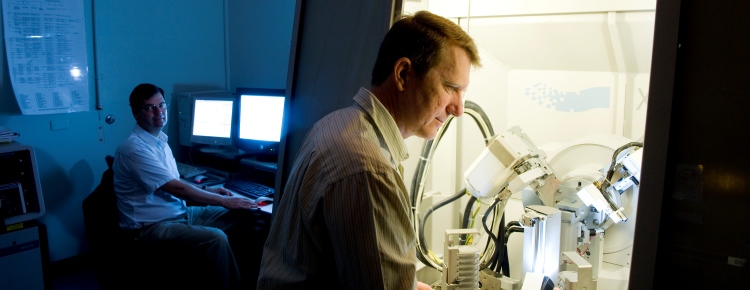Researcher Highlights
A new direction in solar energy
Professor Erich Kisi
One of the most challenging aspects of an intensive three-year research project within the Faculty of Engineering and Built Environment is its goal of simplicity.

Material engineers Dr Heber Sugo and Professor Erich Kisi have received $515,000 from the Australian Solar Institute to create a new device that converts solar energy directly into electricity.
Researchers in Europe and the United States are working on a similar concept but they are using much lower-temperature materials. "Our device will comprise materials used to power the electrical systems of spacecraft, and will reach temperatures of up to 1,500 degrees Celsius," says Sugo, the principal investigator.
"Being able to work at higher temperatures allows a more efficient conversion of heat into electricity, thereby reducing production and environmental costs. More efficient energy conversion means that smaller solar arrays can give the same energy yield.
"A device of this sort has a tendency to become complicated, so designing something for its simplicity is particularly challenging," adds Kisi. "Our device will generate electricity in a single step and has no moving parts."
The centrepiece of the project is a thermionic device, which will be attached to reflective "parabolic dishes" that concentrate solar radiation. The dish holds a number of mirrors that focus light rays onto the device. When heated, the device emits electrons and generates electricity. In its final form, the thermionic device would feed power inverters which in turn would then supply electricity to the grid.
This research differs from other projects in that it is the first to use refractory materials in the thermionic device. The short-term plan is to create a prototype that could be scaled up and commercialised to provide clean energy to households.
While the concept itself seems simple, its development is anything but. At the time of going to print, Sugo was designing a series of experiments involving various materials. "We need to make the materials because they are not currently available," he says. The researchers will have to design and manufacture an emitter and a collector, test them individually and then combine them into a working prototype.
In theory, their device will be far more efficient than current methods. "There are environmental costs in levelling tracts of land to install current solar technologies," says Kisi. "Our model will greatly reduce the amount of space needed through greater conversion efficiency and a single-step process that requires no additional infrastructure."
Sugo and Kisi are part of the Newcastle Institute for Energy and Resources (NIER).
The University of Newcastle acknowledges the traditional custodians of the lands within our footprint areas: Awabakal, Darkinjung, Biripai, Worimi, Wonnarua, and Eora Nations. We also pay respect to the wisdom of our Elders past and present.
